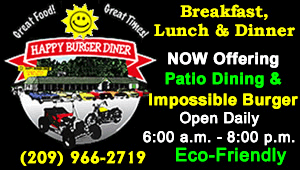WHAT YOU NEED TO KNOW:
California is tracking the development of medium- and heavy-duty vehicle charging and hydrogen fueling stations across the state and released an interactive mapping tool that provides the location of public stations and metrics for private stations.
February 23, 2025 - SACRAMENTO – The California Energy Commission (CEC) has released a new medium- and heavy-duty (MDHD) zero-emission vehicle (ZEV) station dashboard, showcasing 16,327 charging and hydrogen fueling points for MDHD vehicles across the state.

The interactive dashboard, developed with ArcGIS, tracks California’s progress toward having sufficient charging ports and hydrogen fueling nozzles for MDHD ZEVs and will aid in future funding decisions on rapid infrastructure deployment across the state. A “charging point” is defined as one electric charging port, while a “fueling point” is one hydrogen fuel nozzle. Most of the charging points are located in private depots that serve specific fleets, which deploy dedicated infrastructure to support their local and regional needs. These private depots are supplemented by the growing number of publicly available stations being developed across the state, supported by grant funding programs.
“This new dashboard will be an invaluable tool in creating transparency, showing the ongoing progress in deploying infrastructure, and evaluating MDHD ZEV infrastructure needs across the state,” said Hannon Rasool, director of the CEC’s Fuels and Transportation Division. “Transitioning California’s critical freight corridors to zero-emission is crucial to meeting California’s climate goals and making the air cleaner in vulnerable population centers.”
Publicly accessible MDHD ZEV charging and hydrogen fueling station data was obtained by the CEC via an interagency effort with the California Transportation Agency (CalSTA), California Transportation Commission (CTC), Caltrans, California Public Utilities Commission (CPUC), California Air Resources Board (CARB), and various air quality management districts across California.
The dashboard allows users to see where publicly accessible MDHD ZEV charging and hydrogen fueling stations are being developed in California. Data fields include the address of public stations, port and/or nozzle counts, and additional information as available including charging and refueling specifications and eligible vehicle classes.
The CEC encourages additional public input on the dashboard and is dedicated to developing ZEV infrastructure to help meet zero-emission transportation goals. Feedback can be submitted to MDHD_dashboard@energy.ca.gov.
Transitioning MDHD Vehicles to Zero-Emission
While trucks total just six percent of vehicles on California’s roads, they account for over 35 percent of the state’s transportation emissions and a quarter of the state’s on-road greenhouse gases. Investments in MDHD ZEV stations and infrastructure will result in cleaner air and fewer cases of asthma near major transportation corridors.
According to CARB, the sales of new MDHD ZEVs doubled in 2023 over the previous year, now representing one out of every six new vehicles sold for services including last-mile delivery, freight transportation, and school buses.
The investment goes beyond the freight sector – last summer, CARB and CEC announced a new statewide funding program that will put 1,000 new, zero-emission school buses on the road, furthering the state’s lead in having the cleanest buses in the nation.
The Innovative Clean Transit regulation requires all California transit agencies to submit data on progress toward moving to a zero-emission bus (ZEB) fleet. As of 2023, according to CARB’s Innovative Clean Transit Reporting Tool, transit agencies reported having nearly 900 ZEBs in their fleets.
Deploying MDHD ZEVs and infrastructure as quickly as possible will benefit all Californians today and for future generations.
About the California Energy Commission
The California Energy Commission is the state's primary energy policy and planning agency. It has seven core responsibilities: advancing state energy policy, encouraging energy efficiency, certifying thermal power plants, investing in energy innovation, developing renewable energy, transforming transportation, and preparing for energy emergencies.
Source:California Energy Commission







